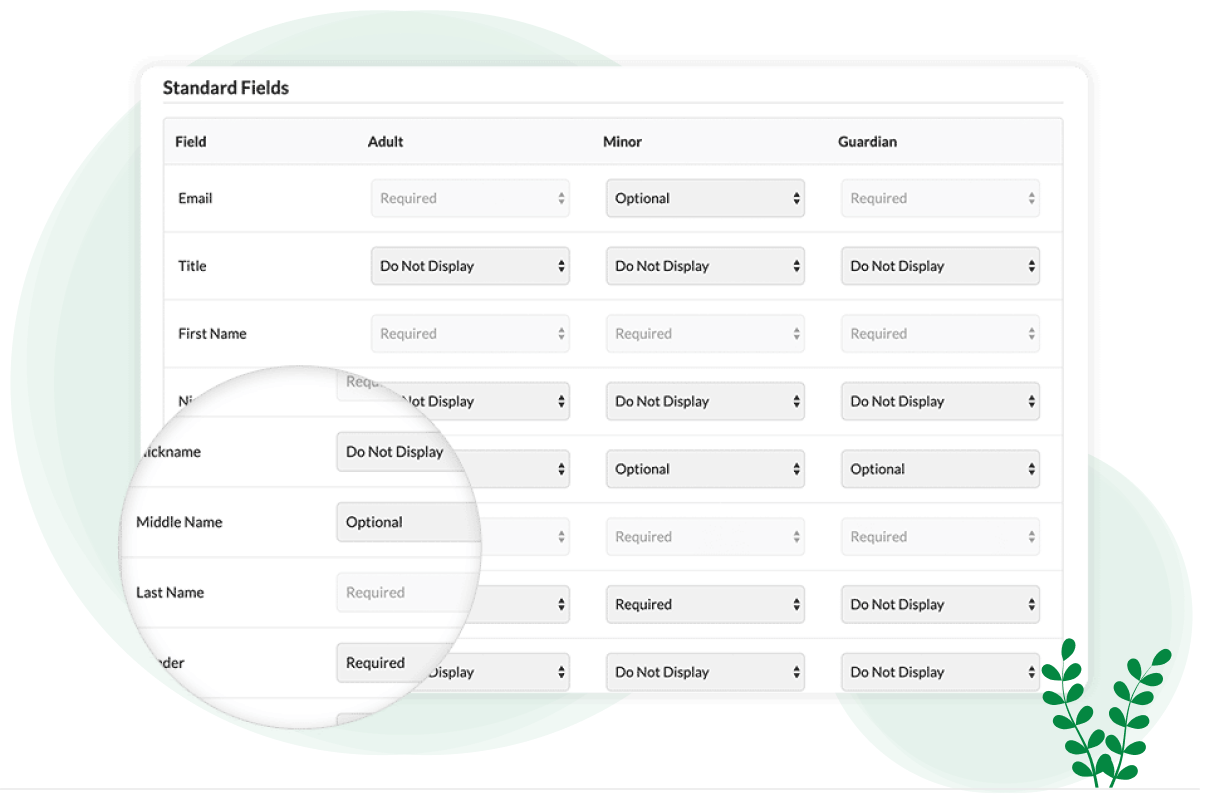
Collect Code of Conduct Agreement With Ease
Starting at only $15 per month
Custom pricing available if you sign over 18,000 documents per year (average of 1,500 per month)
✅ No more paper agreements
✅ Quickly find signed documents
✅ Free online code of conduct template*
Hands-Free Setup, Easy To Use Software
We take care of setting up your code of conduct document so you can focus on your business. After that you are ready to start collecting signatures. It is so easy, you will wish you had made the switch sooner.

Send Us Your Code Of Conduct or Start With Our Template*
Our team will set your account up with your code of conduct or our template.

Your Staff or Participants' Signs Online
Add your new online code of conduct link to your website, emails, kiosk, or QR code.

Signed Code Of Conduct Are Securely Stored
Signed agreements are securely stored in WaiverSign and retrievable in seconds.
4 Reasons You'll Love Our Online Code Of Conduct Software
Utilize our code of conduct agreement template*
If you don't already have a code of conduct agreement in place, we offer a complimentary template to help you get started. We highly encourage collaborating with a lawyer to ensure that your code of conduct addresses your unique requirements.

Manage your agreements online
You can now easily access all your signed code of conduct agreements and participant information within moments. Whether you need to instantly reference something during an event or later retrieve a code of conduct due to a reported incident, WaiverSign simplifies the process. You can search for a code of conduct agreements by participant information, document name, or signing date.

Collect important information with custom fields
With WaiverSign, you have the flexibility to choose the information you wish to collect, along with the option to create personalized fields. Whether it's dietary restrictions, activity preferences, allergy details, or other essential data, you can rest assured that you won't overlook any important information again. Additionally, you can effortlessly access participant information right from your phone during your event.

Make your signing process match your brand
Every touchpoint your business has with the public shapes how it is perceived, from emails to social media interactions. Establishing a consistent and professional brand image can greatly enhance this perception. With WaiverSign's custom branding features, you can make your waiver signing process stand out, leaving a lasting and positive impression that reflects your business’s unique identity.

Millions Of Agreements And Forms Signed And Stored
Great, Reliable Platform
⭐️⭐️⭐️⭐️⭐️
"We wanted an efficient online solution for new members to complete waivers and membership forms without the hassle of paper. WaiverSign gives us convenience and easy record keeping. It’s a great platform that is reliable "
SHERRILYN WALTERS
Chinese Martial Arts and Health Centre Australia
You Won't Regret Using WaiverSign
⭐️⭐️⭐️⭐️⭐️
"Give WaiverSign a try! You will not regret it! This has been so much easier for our volunteers. As a nonprofit organization, we have to be careful with use of our funds. WaiverSign is very reasonably priced for our needs!"
ANISSA SHORES
Save the Cats Arizona
Common Questions About Code of Conduct Policies
What should be included in a professional Code of Conduct?
While each company is different, the following are often included in a code of conduct.
- Company mission
- Purpose of the code of conduct
- Compliance with laws or laws relevant to employee or member rights
- Outline of unacceptable behaviors in the workplace and their consequences
- Details of internal practices such as dress code, drug use, or sexual harassment policies
- External practices such as confidentiality and conflicts of interest
- Company and equipment use and protections
- Outline of code compliance expectations
- Training requirements and guidelines
- Job duties and employment benefits
- Chain of command for disciplinary action
Are private companies required to have a Code of Conduct?
While privately-owned companies are not required to have a Code of Conduct, to create an optimal working environment, it is important to have a clear understanding on what behaviors are expected from employees. This can be done through implementing guidelines through an official Code of Conduct document or agreement that covers major legal risks as well as ethical issues so people know how they should act according the law and good business practices while also helping them make more informed decisions when faced with difficult situations at work.
Do volunteer organizations need a Code of Conduct or Code of Ethics?
The Council of Nonprofits encourages all nonprofits to create an appropriate 'statement of values' or 'code of ethics' for your nonprofit. For some charitable nonprofits it may be appropriate that their codes incorporate standards already adopted by certain professional groups.
What is the difference between a Code of Conduct and a Code of Ethics?
A Code of Ethics generally governs decision-making while a Code of Conduct generally governs actions. Both can help set expectations for employees, members and volunteer staff.
What are some examples of Code of Conduct Policies?
Who Uses WaiverSign?
Whether you provide an experience, manage events, promote healthy lifestyles, or help with personal care, you’ll find WaiverSign’s online waivers and digital release forms will save you time and money. WaiverSign’s online waiver software makes managing waivers simple.
Do You Need To Sign More Than Online Code Of Conduct?
WaiverSign can help you collect electronic signatures on just about any agreement that you need to have signed repeatedly. Your clients will love how easy it is! You’ll love getting organized and saving time!





























